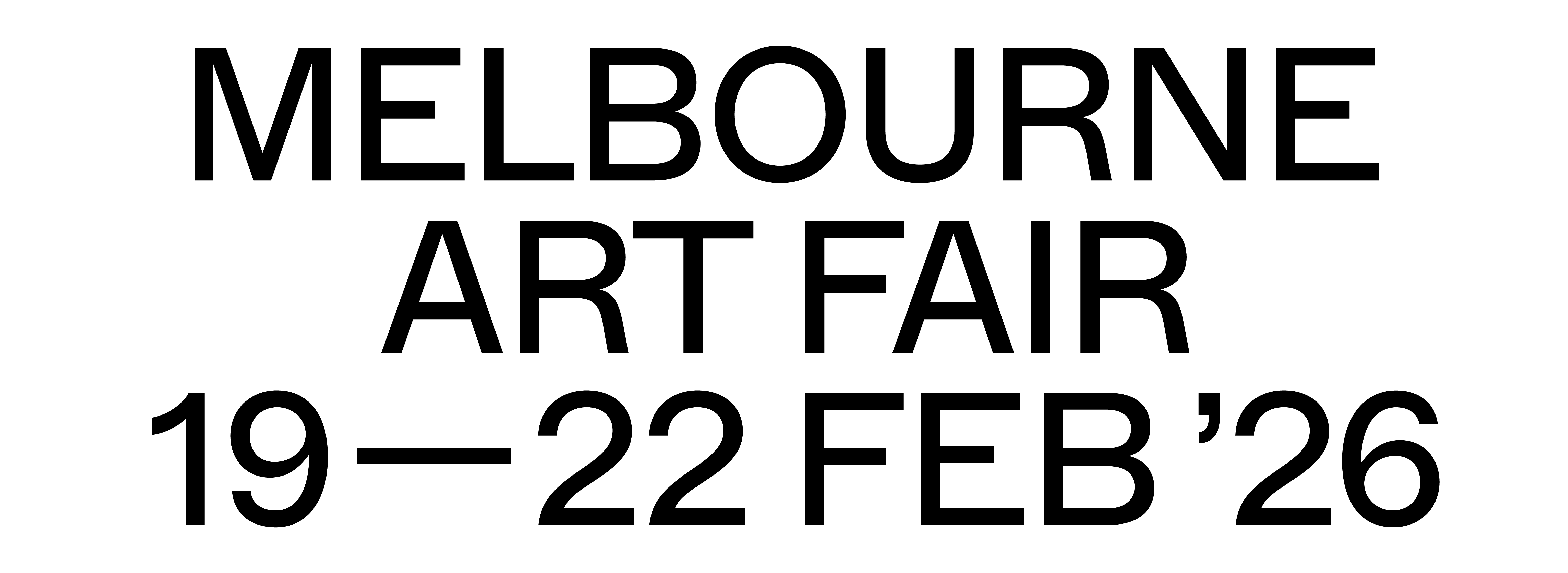2025
 Yona Lee, Smart Sculpture, installation view. Commissioned by Melbourne Art Foundation in partnership with Govett Brewster Art Gallery | Len Lye Centre and supported by Artwork Transport.
Yona Lee, Smart Sculpture, installation view. Commissioned by Melbourne Art Foundation in partnership with Govett Brewster Art Gallery | Len Lye Centre and supported by Artwork Transport.  Dawn Ng, The Earth is an Hourglass, 2024. Commissioned by Melbourne Art Foundation in partnership with Queensland Art Gallery | Gallery of Modern Art and supported by The Ritz-Carlton, Melbourne.
Dawn Ng, The Earth is an Hourglass, 2024. Commissioned by Melbourne Art Foundation in partnership with Queensland Art Gallery | Gallery of Modern Art and supported by The Ritz-Carlton, Melbourne. VFPADF
2024
Julie Rrap, SOMOS (Standing On My Own Shoulders), 2024, cast bronze, edition 1/3, installation view. Photo: Griffin Simm. Melbourne Art Fair 2024.
2022
Kaylene Whiskey in her studio. Courtesy of Iwantja Arts. Photography Meg Hansen.
2020
Ramesh Mario Nithiyendran, Double-faced avatar with blue figure, 2021, bronze, concrete, fibreglass and neon. HOTA Gallery. Commissioned by Melbourne Art Foundation and HOTA. Melbourne Art Fair 2020.
2018
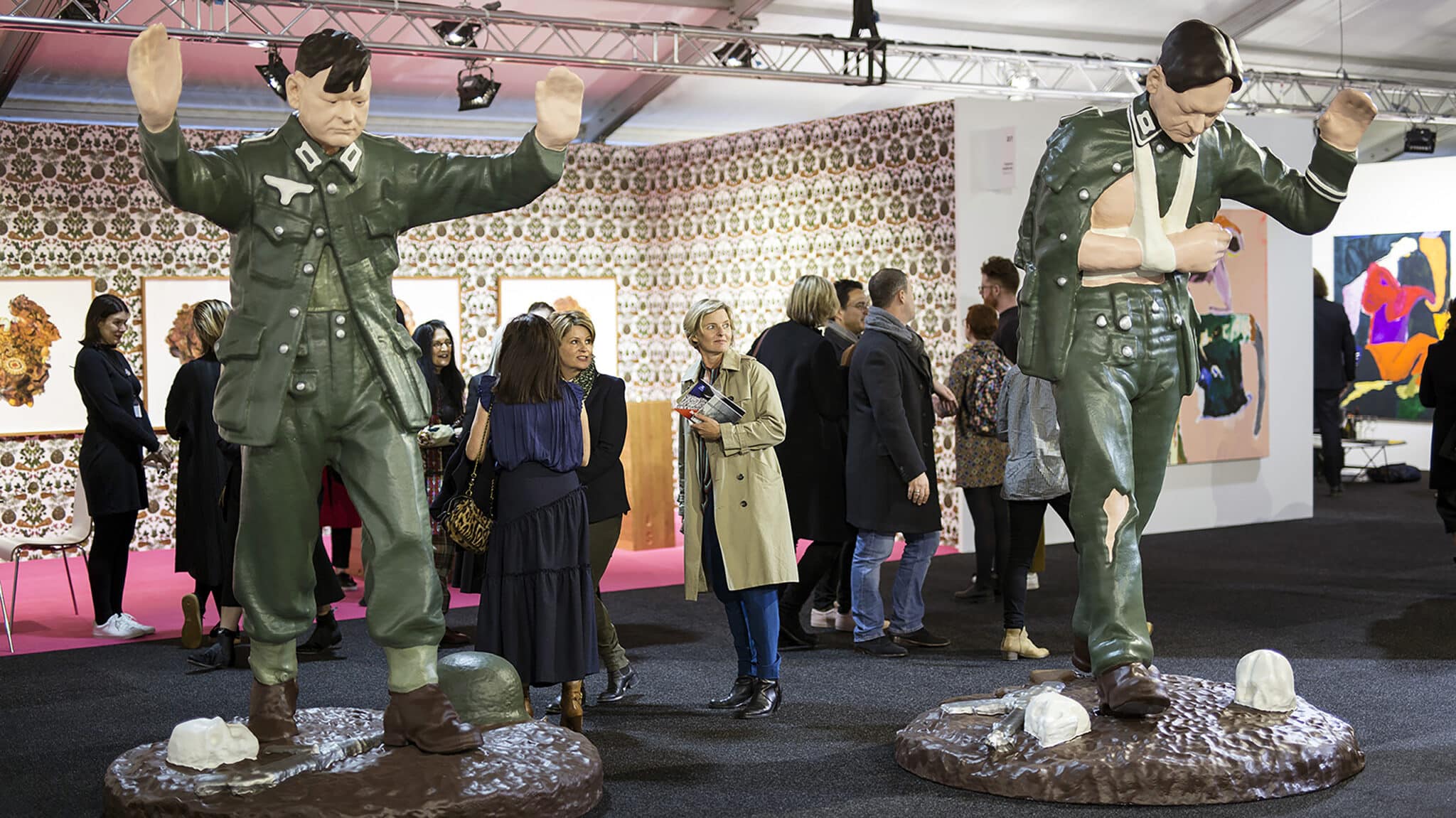
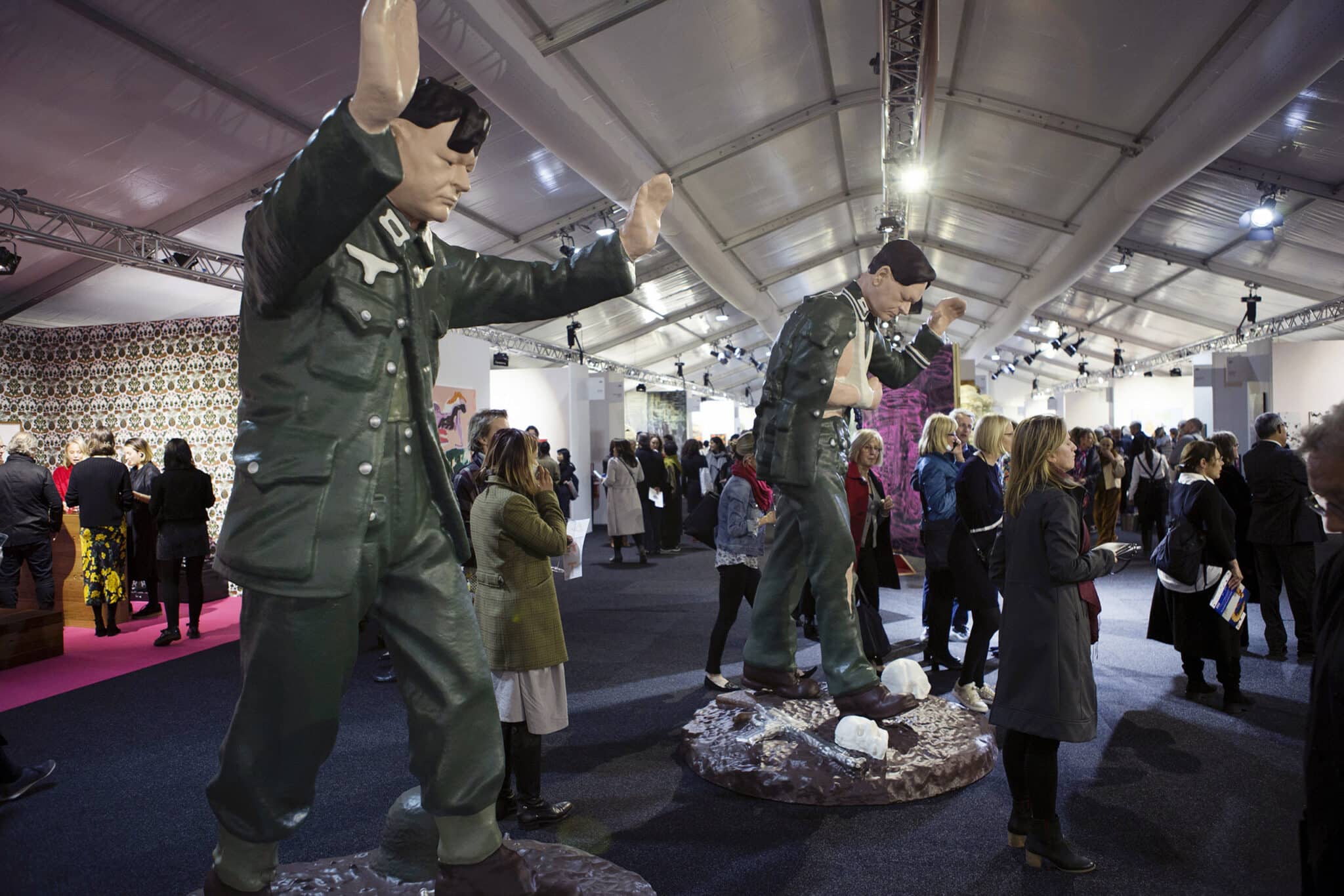 Ronnie van Hout, Surrender, 2018 (Commission by Bendigo Art Gallery in partnership with the Melbourne Art Foundation and supported by Artwork Transport) Installation view, Melbourne Art Fair 2018.
Ronnie van Hout, Surrender, 2018 (Commission by Bendigo Art Gallery in partnership with the Melbourne Art Foundation and supported by Artwork Transport) Installation view, Melbourne Art Fair 2018. 2014
Mikala Dwyer, The Weight of Shape, 2014 (acrylic, fibreglass, copper, ceramic, bronze, brass, stainless steel, steel and rope, dimensions variable) Courtesy the artist and Anna Schwartz Gallery, Naarm/Melbourne.
2012
 Ian Burns, Clouds, 2012, (Commission by Melbourne Art Foundation and donated to the collection of the Art Gallery of South Australia.) Installation view, Melbourne Art Fair 2012, found object sculpture (including ladders, wood, lights, magnifying glasses, tables, bowls, toys, carpet, umbrellas, motors, TV's, sound systems) generating live video and audio. Image courtesy the artist and Anna Schwartz Gallery, Melbourne.
Ian Burns, Clouds, 2012, (Commission by Melbourne Art Foundation and donated to the collection of the Art Gallery of South Australia.) Installation view, Melbourne Art Fair 2012, found object sculpture (including ladders, wood, lights, magnifying glasses, tables, bowls, toys, carpet, umbrellas, motors, TV's, sound systems) generating live video and audio. Image courtesy the artist and Anna Schwartz Gallery, Melbourne. 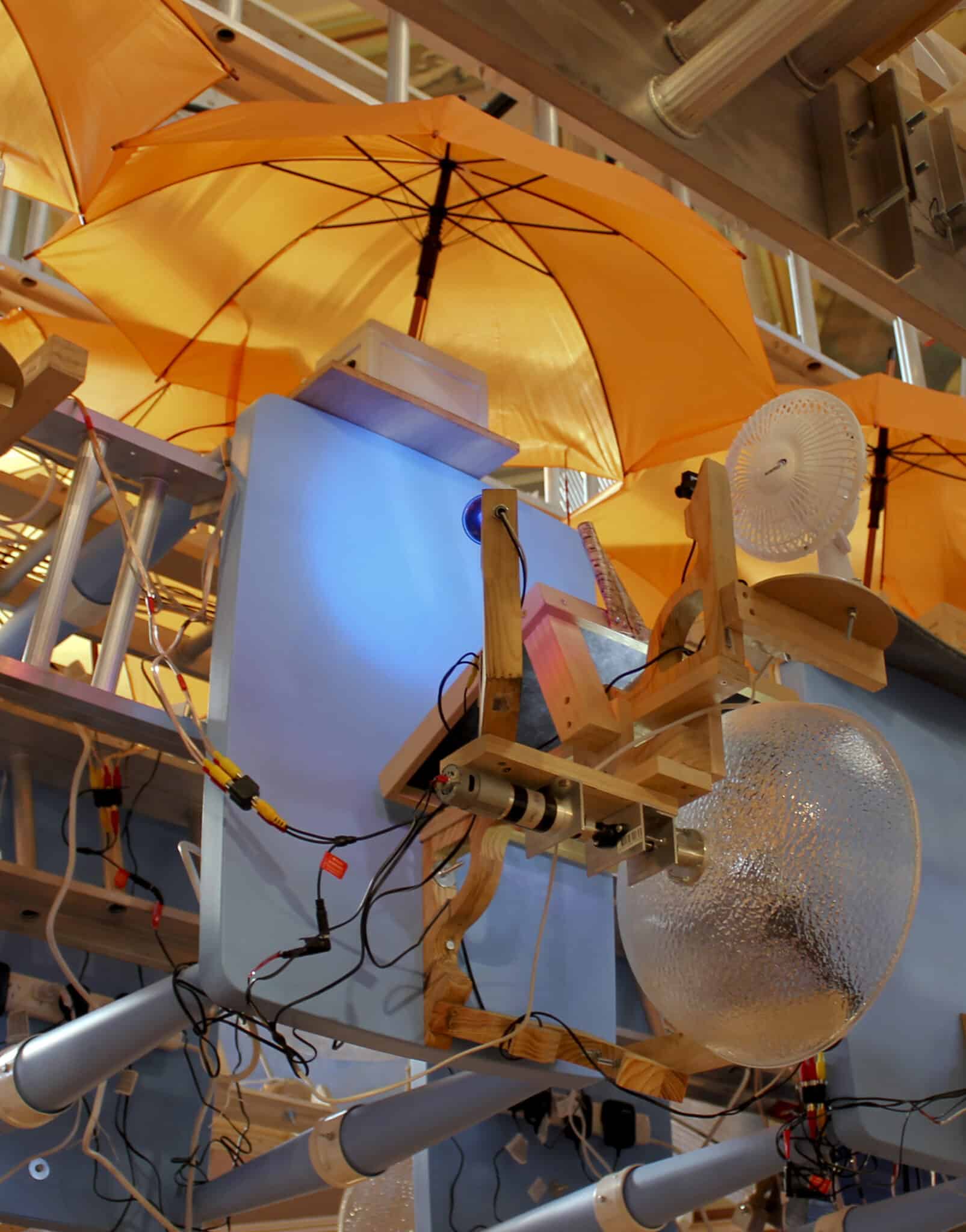 Ian Burns, Clouds, 2012, detail, (Commission by Melbourne Art Foundation and donated to the collection of the Art Gallery of South Australia.) Installation view, Melbourne Art Fair 2012, found object sculpture (including ladders, wood, lights, magnifying glasses, tables, bowls, toys, carpet, umbrellas, motors, TV's, sound systems) generating live video and audio. Image courtesy the artist and Anna Schwartz Gallery, Melbourne.
Ian Burns, Clouds, 2012, detail, (Commission by Melbourne Art Foundation and donated to the collection of the Art Gallery of South Australia.) Installation view, Melbourne Art Fair 2012, found object sculpture (including ladders, wood, lights, magnifying glasses, tables, bowls, toys, carpet, umbrellas, motors, TV's, sound systems) generating live video and audio. Image courtesy the artist and Anna Schwartz Gallery, Melbourne. 2010
Jon Campbell, Stacks On, 2010, Museum of Contemporary Art, gift of the Melbourne Art Foundation (Melbourne Art Foundation Commission 2010) and part purchase supported by the Coe and Mordant families, 2010.
2008
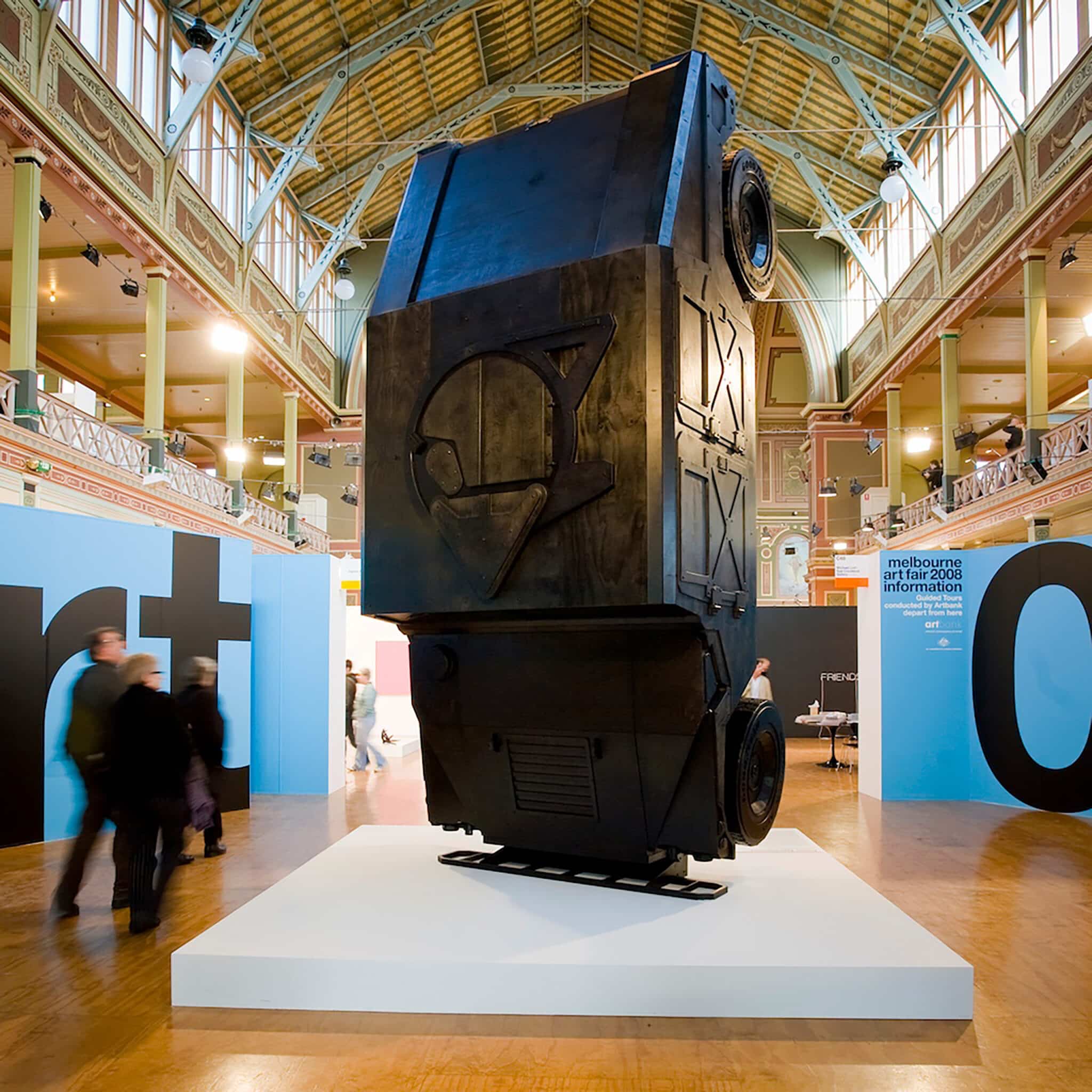 Peter Hennessey, My Humvee (Inversion therapy) 2008, (wood, automotive enamel paint and aluminium overall, 500 x 210 x 180 cm), installation view Melbourne Art Fair 2008. Image courtesy of the artist and Tolarno Galleries, Melbourne.
Peter Hennessey, My Humvee (Inversion therapy) 2008, (wood, automotive enamel paint and aluminium overall, 500 x 210 x 180 cm), installation view Melbourne Art Fair 2008. Image courtesy of the artist and Tolarno Galleries, Melbourne. 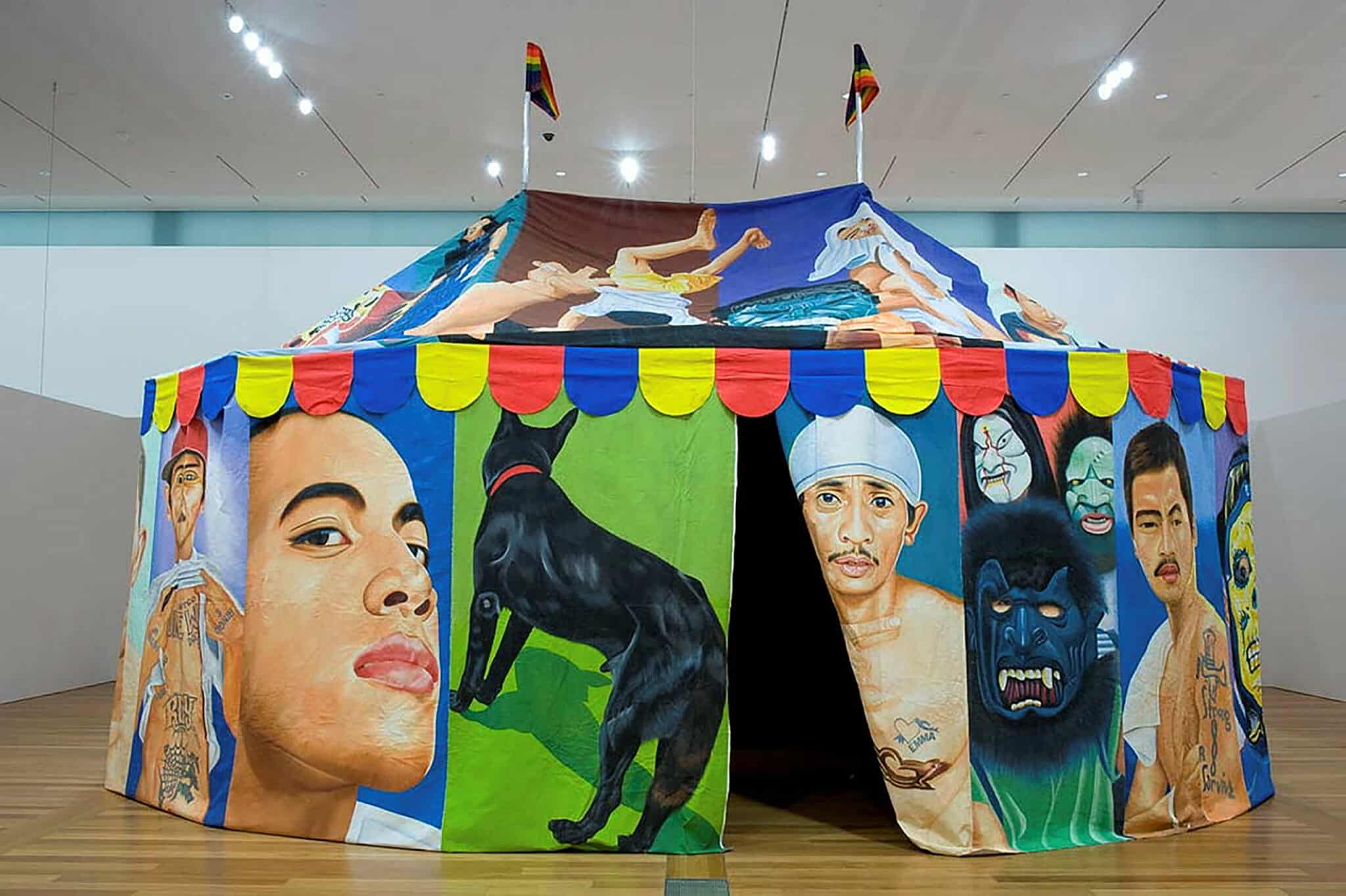 David Griggs, Frog boy's dissertation into a new karaoke cult, 2008 (Commission by Melbourne Art Foundation and donated to the collection of the Art Gallery of Modern Art, Brisbane) Image courtesy the artist and Roslyn Oxley9, Sydney.
David Griggs, Frog boy's dissertation into a new karaoke cult, 2008 (Commission by Melbourne Art Foundation and donated to the collection of the Art Gallery of Modern Art, Brisbane) Image courtesy the artist and Roslyn Oxley9, Sydney. 2006
Michael Parekōwhai, Cosmo McMurty, 2006, (commission by Melbourne Art Foundation and donated to the collection of the National Gallery of Victoria), installation view Melbourne Art Fair 2006.
